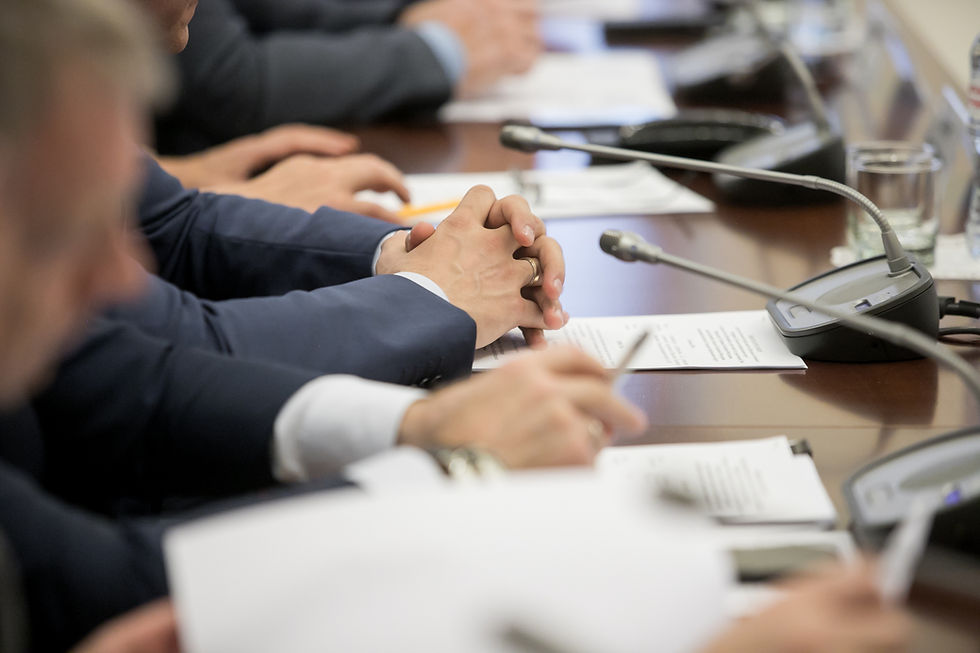Microplastics: Small Size, Huge Impact
- Seaside IT
- Aug 2, 2023
- 3 min read
By Adeline Mueller

Photo courtesy of WHOI
What comes to mind when you think of plastic pollution is water bottles floating on the ocean’s surface or plastic bags floating like tumbleweeds across the street. "Big" plastics, better known as macroplastics, are a problem, but what happens when they’re crushed, torn, and broken down into smaller pieces? Plastics do not disappear, and neither do their pollutive effects. These small pieces of plastics, called microplastics, have entered ecosystems through a number of means. Their effects on human and animal health aren’t known definitively yet, and scientists are still testing how microplastics interact with living organisms. Luckily, governments across the globe have worked to pass legislation that combats the problem.
Microplastics are defined as plastic debris that are smaller than five millimeters in length. Most of the data scientists currently have on microplastics pertains to their origins. According to National Geographic, the sources of microplastics can be split into two main categories. Primary microplastics include those used in manufacturing cosmetic products and some kinds of toothpaste. Meanwhile, secondary microplastics are those that have resulted from the breaking down of larger plastics such as water bottles. According to the European Chemicals Agency, microplastics can be unintentionally created when larger plastics break into smaller pieces, or intentionally created. An example of an intentionally created microplastic is the exfoliating beads in some facial or body scrubs.
Not much is known about microplastics yet, including how much of it is released into the environment in numerical terms and what the long-term effects of microplastic pollution might be. The unclear count is due to rain runoff, plastic spillage accidents, and the sheer microscopic size of this type of waste. According to National Geographic, microplastics, like macroplastics, take hundreds of years or more to decompose. When not properly contained or disposed of, microplastics end up on beaches and in the oceans, posing a significant and semi-permanent threat to marine wildlife. Microplastics find their way into the ocean primarily through storms and other weather conditions that push the microplastics into waterways, although littering is also a cause. Scientists have found evidence of microplastics that have been ingested by marine wildlife throughout the food web, and as a result, humans consume microplastics in their seafood.
Scientists do not yet know the long-term effects of ingesting microplastics, and whether or not it may pose a threat to animal or human health. According to the European Chemicals Agency, lab testing has shown that there is some link between negative physical effects on organisms and exposure to microplastics. More research needs to be done, but clearly these tiny plastics pose big risks.
Although there isn’t a clear indication of what specific consequences humans and the environment might undergo as a result of microplastics, legislative efforts have already been made to prevent this issue from growing. The Microbead-Free Waters Act of 2015, signed into law by former president Barack Obama, bans microplastics in cosmetics and other products that humans may risk ingesting regularly. This keeps plastic out of the oceans and out of humans and animal bodies by preventing producers from using primary microplastics in their products. Additionally, the European Union is currently working on a proposal that would ban the usage of intentional microplastics in products.
Ultimately, the specific effects of microplastics have not been determined, but it is clear that their spread throughout the environment and into our oceans, no matter the source, could be detrimental to ocean wildlife, and perhaps even to human health as well. Despite what little is known about the threat posed, governments have been relatively quick to respond, crafting legislation that will ban the intentional use of microplastics in retail products consumed by humans.
References
Microplastics. ECHA. (n.d.). Retrieved April 27, 2023, from https://echa.europa.eu/hot-topics/microplastics
National Geographic Society. (2022, May 20). Microplastics. Education. Retrieved April 27, 2023, from https://education.nationalgeographic.org/resource/microplastics/
One Hundred fourteenth congress of the United States of America - govinfo. (2015). Retrieved April 27, 2023, from https://www.govinfo.gov/content/pkg/BILLS-114hr1321enr/pdf/BILLS-114hr1321enr.pdf
Qader, S. A., & Bichet, E. (2022, September 7). Microplastics, big impact: New EU proposal to restrict microplastics. Productwise. Retrieved April 27, 2023, from https://products.cooley.com/2022/09/07/microplastics-big-impact-new-eu-proposal-to-restrict-microplastics/
US Department of Commerce, N. O. and A. A. (2016, April 13). What are microplastics? NOAA's National Ocean Service. Retrieved April 27, 2023, from https://oceanservice.noaa.gov/facts/microplastics.html#:~:text=Most%20plastics%20in%20the%20ocean,through%20waterways%20into%20the%20ocean



